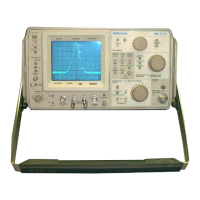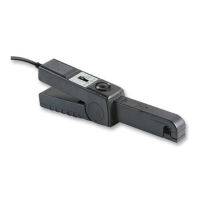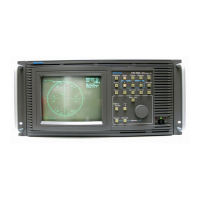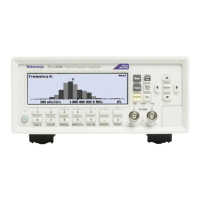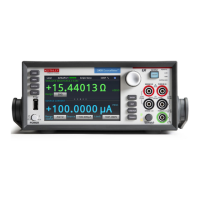Application Exa
mple
To Time the Inputs to a Router.
1. Perform steps
1 through 5 of the previous
procedure.
2. Route the signal you want as the
master to the appropriate input, SDI or
Composite, an
d terminate properly.
3. Route the refe
rence signal to the
reference input and terminate
appropriately.
4. Savethetimingoffsetforthemaster
input (MEAS > Save Offset > SEL) and
select the Relative to: Saved Offset
mode from the pop-up menu.
5. Now select other inputs to the router
to be connected to the instrument. For
each input, the relative timing will be
displayed.
6. Ad just the timing offset at the master
sync source to time down the inputs to
the router to match the master.
NOTE. You cannot save the timing offset if either the input or reference is missing or unlocked. You also cannot save a
reference w hen in internal mode. Saving an offset in these conditions would lead to misleading results so it is not allowed by
the i nstrument. A warning message will appear on the screen if you attempt to save the offset when it is not allowed.
Usage Notes.
The resolution of the timing display is one 27 MHz clock cycle or 37 ns, for Composite and SD video. To get the greater
accuracy needed for a composite signal, first use the timing display to get close, and then use a vector display for the
final burst phase alignment. Since these two displays can b e present simultaneously in separate tiles, this process is
still easy and quick.
For c omposite signals, the definition of time aligned is straight forward, but for an SDI input relative to an analog
reference, the situation is more complex. For the timing display, the definition of zero offset on an SDI input assumes the
SDI signal will be converted to composite. The converted c omposite signal is then compared to the analog reference.
For the conversion, a half-band filter with a 33 clock-cycle delay and an analog reconstruction filter are assumed. This
conversion introduces a delay of about 3 µs.
In the Relative to: Rear Panel mode, this 3 µs conversion delay is removed from the measured offset before the display
is generated. In the Relative to: Saved O ffset mode, it has no effect.
This timing relationship between input and reference is also compatible with the w aveform mode. That is, if you have zero
timing on the Timing display and change from internal to external reference, the displayed waveform will not shift position.
When timing analog composite signals, adjust the system phase with the Vector display. The Vector display is described
in Timing Displays for Simple Versus Complex Timing in the Display Information chapter of the WVR6020, WV R7020,
and WVR7120 User Technical Reference manual found on your User Documentation CD .
122 Waveform Rasterizers Quick Start User Manual
